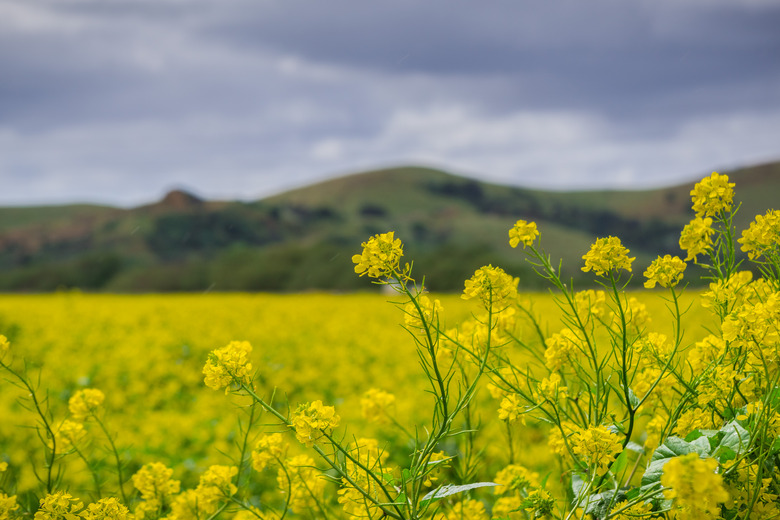Size Of A Mustard Seed Tree
It's a bit of a stretch to call the black mustard plant a tree, but since the parable of the mustard tree is a part of the Christian and Buddhist religions, the name has stuck. Black mustard is actually a very tall weed with teensy seeds used to make mustard.
Meet the Black Mustard "Tree"
The black mustard plant (Brassica nigra) is not a tree, although it can grow as tall as one. It is an annual winter herb with a taproot, and it's an herb that grows fast, branching profusely. It can grow to 12 feet tall. The plants are soon covered with brilliant yellow flowers that produce slender, beaked seed pods.
The seeds inside the pods are dark and tiny, each one about 1 millimeter in diameter. One pod can hold up to 12 seeds. When you consider the profusion of flower-producing pods, it's easy to see how the plant becomes invasive.
Understand the Weed Issue
It may be and seems largely accepted that the black mustard was the tree referenced in the Bible, but before planting it in your yard, you need to understand the weed issue. Black mustard grows with incredible speed in open grasslands.
Black mustard is a winter annual weed in the mustard family. It grows rapidly and self-seeds easily, making it a prolific weed in open grasslands. Chemicals produced by the plant are allelopathic, meaning that they prevent other seeds from germinating. That makes its spread even more aggressive, and native plants are often the ones affected.
In addition, as black mustard spreads across fields, it increases the frequency of fires in nearby vegetation, including native broadleaf evergreen shrubs and small trees. The loss of these plants can transform the habitat to grassland, giving the black mustard yet more room to roam.
Use the Mustard Plant
When its growth is kept in check, the black mustard plant can be used for a variety of purposes. The first is making mustard. The condiment mustard is made from the ground-up seeds of the black mustard and its relatives in the mustard family.
In addition, this pungent plant has been widely used for culinary and medicinal purposes. Mustard plasters are still used by some people to assist with arthritis pain. All of the plant is edible — leaves, seeds, and stems — and can be cooked or eaten raw like lettuce. Stems can also be cooked, and the seeds can be ground up and used as a flavoring.
